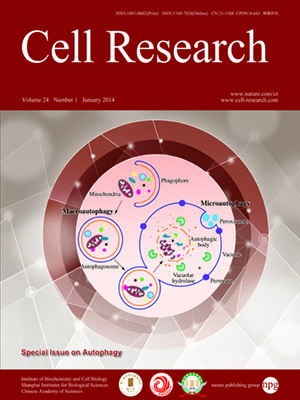
Volume 24, No 1, Jan 2014
ISSN: 1001-0602
EISSN: 1748-7838 2018
impact factor 17.848*
(Clarivate Analytics, 2019)
Volume 24 Issue 1, January 2014: 1-2
EDITORIAL
Recent progress in autophagy
Li Yu1
1Center for Life Sciences, School of Life Sciences, Tsinghua University, Beijing 100084, China
Correspondence: (liyulab@mail.tsinghua.edu.cn)
Autophagy is a lysosome-based degradation process whose primary function is to degrade long-lived proteins and recycle cellular components. So far, 3 types of autophagy have been documented, including macroautophagy, microautophagy and chaperone-mediated autophagy. Autophagy has been shown to degrade cargo in selective and no-selective manners. In literature, the term “autophagy” usually indicates macroautophagy. Macroautophagy is characterized by the formation of double membrane vesicles termed autophagosomes. The biogenesis of autophagosomes is a subject of intensive study in recent years. Autophagy can be induced by various stimuli, including nutrient starvation, hypoxia and various chemical reagents such as rapamycin. In yeast, the major physiological function of autophagy is to adjust the metabolic machinery in response to varying nutrient status, thereby ensuring the cell survival in an ever-changing environment. In mammalian cells, however, the roles of autophagy are more complex. Autophagy has been implicated in many different cellular processes as varied as cell survival, death, pathogen clearance, and antigen presentation. Various diseases have been linked to dysfunctioning autophagy. There are strong genetic and animal data supporting the direct connections between autophagy and cancers, neurodegenerative diseases, and chronic inflammation. Albeit the exact mechanisms of autophagy in each of the diseases remain to be determined, modulating autophagy has become a target for therapeutic approaches for various diseases.
10.1038/cr.2014.1
FULL TEXT | PDF
Browse 2259


